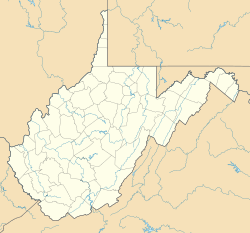Garrison, West Virginia facts for kids
Quick facts for kids
Garrison, West Virginia
|
|
|---|---|
| Country | United States |
| State | West Virginia |
| County | Boone |
| Elevation | 1,053 ft (321 m) |
| Time zone | UTC-5 (Eastern (EST)) |
| • Summer (DST) | UTC-4 (EDT) |
| Area code(s) | 304 & 681 |
| GNIS feature ID | 1554533 |
Garrison is a small place located in Boone County, West Virginia, in the United States. It is known as an unincorporated community. This means it is a settlement that does not have its own local government. Instead, it is managed by the larger county government.
Contents
What is an Unincorporated Community?
An unincorporated community like Garrison is a group of homes or buildings. It is not officially a city or a town. People living there still follow county and state laws. They also use services provided by the county.
Life in an Unincorporated Area
- Residents pay taxes to the county.
- The county provides services like roads and police.
- There is no separate town hall or mayor.
Garrison's Coal Town History
Garrison was once a coal town. This means it was a community built around the business of mining coal. Many people who lived in Garrison worked in the coal mines nearby. Coal towns were very important in West Virginia's history. They helped power homes and industries across the country.
Why Coal Towns Were Important
Coal towns played a big role in the economy. They provided jobs for many families. They also helped develop new technologies for mining. Over time, as coal mining changed, many of these towns also changed.
Where is Garrison Located?
Garrison is found in the eastern part of Boone County. It is about 3 miles (5 kilometers) east-southeast of another community called Sylvester. The area is known for its hills and natural beauty.
Past Times in Garrison
Garrison used to have its own post office. A post office is where people send and receive mail. It often serves as a central meeting point in a community. The post office in Garrison closed its doors on March 30, 1989. This was a common change for many small communities as services became more centralized.



